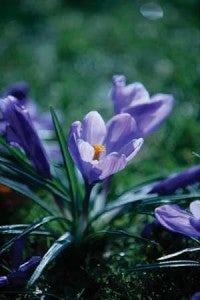John Freeman’s Guide to Colour: Page 2

Enhance Skies (Above)
Polarising filters are excellent for enhancing skies and cutting down on haze. Compare these two photographs. The left hand one was shot without a polarising filter, and the blue sky is slightly flat. The right hand one was shot with a polarising filter. Notice how much deeper the blue of the sky is. You can also use these filters to cut down on reflections in glass and water. However, when using them with ultra wide lenses the effect will be uneven on blue skies.
White Balance
If colour plays an important part in your composition, then you should take the trouble to make sure that the colours are accurate by setting the correct White Balance. If the preset settings do not offer enough fine tuning then take a custom reading from the scene, using a white or neutral surface to take the reading from (a folding white reflector would be ideal for this purpose).
 Telephoto Flower (Right)
Telephoto Flower (Right)
By using a 200mm telephoto lens and a wide aperture of f2.8, the background in this picture has been put out of focus. This has resulted in an attractive mottled green background where the various hues blend together and highlight the purple flower.
John’s Top Tips – Composition
1. Use a grey card in a test shot to create a neutral profile for the particular lighting conditions that you are working under.
2. Polarising filters will change the depth of blue in skies. Always have one with you.
3. Try to use the camera’s W/B setting on manual. This will help you to achieve greater atmosphere in your shots.
4. Remember that daylight is constantly changing. It is much warmer at the beginning and end of the day than it is at midday.
5. Make sure that your computer screen is properly calibrated so that what you see is what you get.




